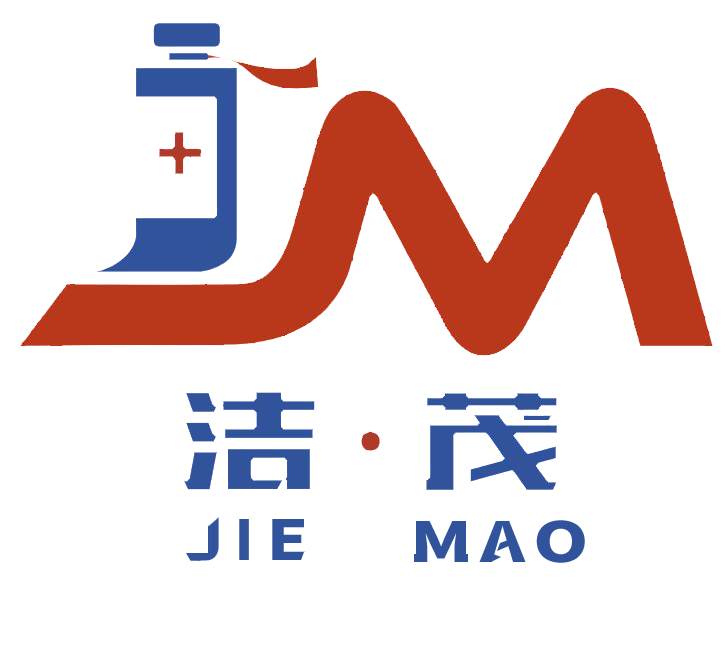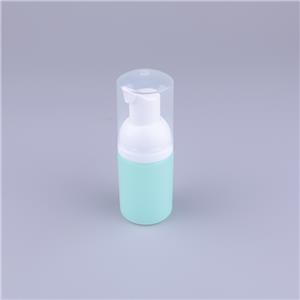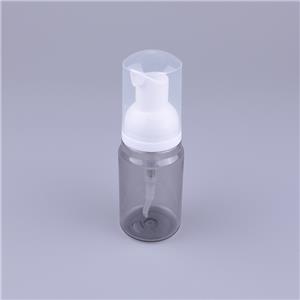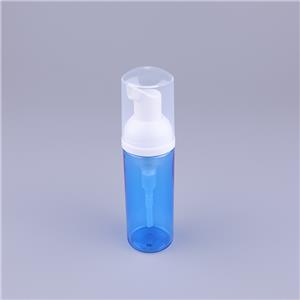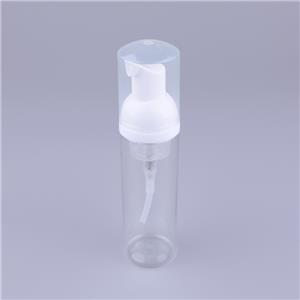- Home
- >
- News
- >
- Public Information
- >
- Plastic injection blow molding process
Plastic injection blow molding process
Plastic injection molding is an integrated hollow product production technology that combines injection molding and blow molding. With the advantages of high precision, high sealing, and low energy consumption, it has become the core molding method in high-end packaging fields such as medicine, food, and cosmetics. This process achieves one-time molding from plastic particles to finished hollow containers through a continuous process of injection molding preform and blow molding, effectively solving the problems of insufficient precision and excessive burrs in traditional blow molding processes. With the advancement of material technology and intelligent equipment, injection molding technology is developing towards greater efficiency, precision, and environmental friendliness, supporting the large-scale production of high-end hollow products.
1、 Core principles and technological advantages of injection blowing process
The core principle of plastic injection molding process is the two-step molding method of "injection molding preform+blow molding shaping", which completes the continuous operation of preform injection molding and hollow blow molding through the same equipment, avoiding the secondary pollution and accuracy loss of preform transportation in traditional blow molding process. The essence of its process is to utilize the plasticity of plastic melt, first forming a tubular billet with a certain shape and wall thickness through injection molding, and then using the pressure of compressed air to expand and shape the thermoplastic billet in the mold, ultimately obtaining a hollow product that is consistent with the mold cavity.
The core stage of the process flow
The complete process of injection molding technology is divided into three key stages: the injection molding stage is the foundation. In the injection mold, plastic particles are heated and melted by the material cylinder, and then injected into the cavity of the molding mold under high pressure by the screw, forming a tubular molding (preform) with one end closed and the other end open. The wall thickness and dimensional accuracy of the molding directly affect the quality of the final product. This stage requires precise control of injection molding pressure (usually 50-100MPa) and temperature (adjusted according to the material, such as PP at 180-220 ℃); The blow molding stage is the key to shaping. The preform rotates or moves with the mold to the blow molding station. After the blow molding mold is closed, high-pressure compressed air (pressure 0.5-3MPa) is introduced through the open end of the preform to expand the hot preform radially and tightly adhere to the inner wall of the blow molding mold. At the same time, the mold cooling system rapidly cools down to solidify and shape the product. The blow molding pressure and holding time need to match the product size, and large containers require higher pressure and longer holding time; The demolding and retrieval stage is the final stage. After the blow molding mold is opened, the finished product is taken out of the mold through the ejector mechanism, completing a production cycle. For products with threads or complex structures, a dedicated demolding mechanism needs to be designed to avoid deformation.
Technological advantages compared to traditional craftsmanship
Compared with traditional processes such as extrusion blow molding and injection blow molding (two-step method), injection molding has significant advantages: high molding accuracy is the most prominent feature. The injection molding and blow molding of the preform are completed in the same equipment, and there is no secondary transportation of the preform. The size error can be controlled within ± 0.1mm, especially for products with threaded bottle mouths. The thread accuracy can reach level 6 accuracy in GB/T 197, ensuring sealing; The product quality is stable, and the uniformity of the billet wall thickness is good (deviation ≤ 5%). After blow molding, the product has no burrs or obvious mold lines, and the surface smoothness is high (Ra ≤ 0.05 μ m), without the need for subsequent trimming treatment; High production efficiency, using multi station rotating equipment can achieve continuous production. The production cycle of single-mode cavity is 10-30 seconds, and the production capacity of multi-mode cavity equipment (such as 8-cavity and 12 cavity) can reach thousands of pieces per hour; High material utilization rate, no waste generated, with a material utilization rate of over 95%, higher than extrusion blow molding (about 85%); Excellent sealing performance, seamless one-piece bottle mouth, coupled with precise thread design, can achieve high airtightness and meet the anti leakage requirements of liquid packaging.
2、 Core equipment and critical systems
The implementation of plastic injection molding process relies on dedicated injection molding machines and supporting systems. The performance of the equipment directly determines the stability of the process and the quality of the products. The core equipment consists of injection molding system, blow molding system, mold clamping system, indexing system, and control system.
Structural composition of injection molding machine
The injection molding system is the core of forming the preform, including a hopper, screw, barrel, and nozzle. The hopper stores the dried plastic particles and supplies them accurately through a measuring device; The screw adopts a gradual compression ratio design (compression ratio 3-5:1) to ensure that the plastic is fully melted and plasticized, and the speed can be adjusted (50-150r/min) to control the plasticization quality; The material barrel is heated in sections (usually 3-5 sections), and the temperature gradually increases from the feeding section to the nozzle to adapt to the plastic melting process; The nozzle is closely connected to the main flow channel of the mold to prevent melt leakage, and the nozzle aperture is designed according to the size of the billet (usually 3-8mm).
The blow molding system is responsible for product shaping and consists of blow molding molds, air pressure control systems, and cooling systems. The blow molding molds are made of high-strength alloy materials (such as 718H mold steel), and the mold cavity is mirror polished to ensure a smooth surface of the product. For irregularly shaped products, exhaust grooves need to be designed to avoid air bubbles; The air pressure control system adjusts the blow molding pressure and holding time through precision valves, and requires high pressure stability (fluctuation ≤ ± 0.05MPa); The cooling system rapidly cools down through the circulating water channel inside the mold, which accounts for 40% -60% of the molding cycle. The water channel is 15-25mm away from the surface of the mold cavity to ensure uniform cooling.
The clamping and shifting system realizes workstation switching, and the clamping system provides locking force (usually 50-300kN according to the product size) to prevent mold expansion during injection molding and blow molding; The transposition system (rotary or linear) transfers the billet from the injection molding station to the blow molding station. The rotary transposition accuracy reaches ± 0.05mm, ensuring precise docking between the billet and the blow molding mold. The transposition time can be controlled within 1-2 seconds, reducing the cooling effect of the billet.
The control system adopts PLC (Programmable Logic Controller) combined with touch screen to achieve digital parameter setting and real-time monitoring. It can store multiple sets of process parameters (for different products), support remote diagnosis and data tracing. High end equipment is also equipped with a visual inspection system to detect product defects online and automatically eliminate non-conforming products.
3、 Requirements for raw material characteristics and process adaptation
The injection molding process has specific requirements for the melting performance, melt strength, and cooling and shaping characteristics of raw materials. Not all plastics are suitable for this process, and material selection needs to be comprehensively judged based on product performance requirements and process characteristics.
Mainstream applicable materials and characteristics
Polypropylene (PP) is the most commonly used material in injection molding process, accounting for over 60% of the total amount of injection molded products. PP has excellent melt flowability and moderate melt strength, good formability of injection molded blanks, uniform expansion during blow molding, fast cooling rate, and short molding cycle (10-20 seconds). Food grade PP complies with FDA and GB 4806.7 standards, is non-toxic and odorless, suitable for food packaging bottles (such as seasoning bottles, honey bottles), pharmaceutical packaging bottles (such as oral medicine bottles), and its chemical and temperature resistance (continuous use temperature of 100 ℃) are also suitable for daily chemical products such as detergent bottles.
Polyethylene (PE) is divided into HDPE and LDPE. HDPE, due to its high crystallinity and good rigidity, is suitable for making large capacity injection blown containers (such as 5-20L chemical bottles) and has good impact resistance and chemical corrosion resistance; LDPE has good flexibility and high melt strength, making it suitable for thin-walled and small capacity products (such as cosmetic sample bottles), but the cooling rate is slower and the molding cycle is slightly longer than PP.
Poly (ethylene terephthalate) (PET) is suitable for high-end transparent packaging. The light transmittance of PET injection blown products is more than 90%, with high surface gloss, excellent mechanical strength, and good chemical resistance. It is widely used in cosmetics bottles (such as essence bottles) and health care products bottles. However, PET has strong moisture absorption and requires strict drying (moisture content ≤ 0.005%) before processing. The injection molding temperature can reach 270-290 ℃, which requires high precision in equipment temperature control.
Polycarbonate (PC) is used to make high-strength transparent containers (such as medical equipment bottles and baby bottles) due to its good transparency and strong impact resistance. PC injection molded products can be continuously used at temperatures up to 120 ℃, but the cost is high, and antioxidants need to be added during processing to prevent high-temperature degradation.
Other special materials such as polyamide (PA) are suitable for oil resistant containers, while polystyrene (PS) is used for disposable medical sampling bottles. These materials require process parameters to be adjusted according to their characteristics, such as PA requiring higher injection molding temperatures (230-260 ℃) and longer cooling times.
Requirements for Key Performance Indicators of Materials
The injection molding process has strict requirements for the melt flow rate (MFR) of the material, usually controlled at 5-25g/10min (190 ℃/2.16kg). If the MFR is too high, it will lead to insufficient strength of the billet and easy breakage during blow molding; If the MFR is too low, the melt flowability is poor, and injection molded blanks are prone to material shortage or weld marks. Melt strength is a key indicator in the blow molding stage, referring to the ability of the melt to resist stretching and expansion. Insufficient melt strength can lead to necking or cracking of the billet during blow molding. The melt strength of PP and PE is moderate and suitable for injection molding; However, PVC melt has low strength and needs to be modified before it can be used in injection molding processes. The cooling and shaping speed affects production efficiency. Crystalline plastics (PP, PE) have a fast cooling speed and a short molding cycle; The cooling rate of amorphous plastics (PC, PET) is slow, and the cooling system design needs to be optimized.
4、 Process parameter control and quality optimization
The core of quality control in injection molding process is to precisely regulate key parameters, reduce product defects, ensure dimensional accuracy and performance stability. Parameter settings need to be dynamically adjusted according to product size, material characteristics, and mold structure.
Principles for regulating key process parameters
The injection parameters directly affect the quality of the billet: the injection temperature needs to be set according to the melting point of the material. The temperature of the PP barrel is usually 180-200 ℃ in the front section, 200-220 ℃ in the middle section, and 210-230 ℃ in the nozzle. If the temperature is too high, the material will degrade (such as PET turning yellow), and if the temperature is too low, the plasticization will be uneven and the billet will have cold spots; The injection pressure needs to match the complexity of the preform, with a pressure of 80-100MPa for small precision preforms (such as pharmaceutical bottles) and 50-70MPa for large rough preforms (such as chemical bottles). The holding pressure should be 60% -80% of the injection pressure to ensure that the preform is dense and bubble free; The injection speed is controlled in sections, with an initial slow speed to prevent melt splashing, a middle section quickly filling the mold cavity, and a final section slowly maintaining pressure to reduce internal stress.
Blow molding parameters determine the quality of product molding: The blow molding pressure needs to be adjusted according to the product volume and wall thickness. For small capacity thin-walled products (such as 100ml cosmetic bottles), the pressure is 1.5-2.5MPa, and for large capacity thick walled products (such as 5L chemical bottles), the pressure is 2.5-3.5MPa. Insufficient pressure can lead to material shortage or surface depression of the product, while excessive pressure can easily cause burrs; The blow molding time includes inflation time and holding time. The inflation time should ensure that the billet is completely attached to the mold (usually 0.5-2 seconds), and the holding time should be sufficient to cool and shape the product (usually 2-5 seconds). Insufficient holding time can cause shrinkage and deformation of the product; The delay time for blow molding (the time from the transfer of the preform to the blow molding station to the start of inflation) should be minimized as much as possible to prevent the preform from cooling down and becoming too hard to inflate. It is usually controlled within 1-3 seconds.
Cooling parameters affect production efficiency and dimensional accuracy: the mold temperature needs to be set according to the crystallization characteristics of the material, with PP mold temperature of 40-60 ℃ (to promote crystallization) and PET mold temperature of 10-30 ℃ (to maintain transparency through rapid cooling); The cooling water volume needs to be uniform, ensuring that the temperature difference between various parts of the mold cavity is ≤ 5 ℃. The cooling time accounts for 50% -70% of the molding cycle. The cooling time can be shortened by increasing the number of cooling water channels or reducing the water temperature (usually 15-25 ℃), but it is necessary to avoid excessive internal stress caused by rapid cooling in the product.
Common quality defects and solutions
Common defects in production can be solved through parameter adjustment and mold optimization: billet breakage is often caused by low injection temperature or too fast injection speed, requiring an increase in barrel temperature or a decrease in injection speed; Uneven wall thickness of the product is due to uneven wall thickness of the preform or uneven distribution of blow molding pressure, and it is necessary to adjust the injection molding pressure holding parameters or optimize the mold exhaust groove; The deformation of the bottle mouth is usually caused by insufficient cooling of the bottle mouth during injection molding, and it is necessary to increase the cooling water circuit of the bottle mouth or reduce the injection molding temperature in the corresponding area; Scratches on the surface of the product may be caused by impurities in the mold cavity or wear of the demolding mechanism, requiring regular cleaning of the mold or replacement of demolding components; Bubbles or pinholes may be affected by insufficient drying of raw materials or air entrapment during injection molding. It is necessary to strengthen the drying of raw materials (such as PET drying temperature of 120 ℃ for 4 hours) or reduce the screw speed to reduce air entrapment.
5、 Application Fields and Technological Development Trends
The injection blowing process, with its advantages of high precision and high sealing, occupies an irreplaceable position in the field of high-end packaging and special hollow products. With the upgrading of market demand and technological innovation, its application scope and process performance continue to expand.
Main application areas and typical products
The pharmaceutical packaging field is the core market for injection molding technology. Medical bottles have strict requirements for sealing, cleanliness, and dimensional accuracy. Injection molded oral solid medicine bottles (such as capsule bottles and tablet bottles) have high thread accuracy at the bottle mouth and can be sealed against moisture with butyl rubber stoppers; The eye drops bottle is formed in one go using injection blowing technology, with no seams at the bottle mouth to avoid contamination of the medication; Vaccine and reagent bottles are made of medical grade PP or PC, and the injection and blowing process ensures that the bottle body is free of bubbles and impurities, meeting sterile requirements.
In the field of food packaging, safety and freshness are emphasized. Seasoning bottles produced by injection blowing technology (such as sauce bottles and vinegar bottles) are made of food grade PP, with good sealing at the bottle mouth to prevent liquid leakage; Honey and jam bottles are made transparent and have smooth inner walls through injection molding technology, making it easy to pour and clean the contents; Infant and toddler food bottles are made of BPA free PET or PP, injection molded to ensure that the bottle body has no odor and meets food safety standards.
In the field of cosmetics and daily chemicals, the pursuit of appearance texture and precision is made. essence bottles and lotion bottles produced by injection and blowing process are made of transparent PET or acrylic, and the surface can achieve high smoothness, which can be upgraded with electroplating or silk screen printing process; Shampoo and shower gel bottles are made of chemical resistant HDPE, and the injection molded bottle mouth threads are precisely matched with the pump head to prevent leakage; The travel sample bottles are mass-produced through multi cavity injection and blowing equipment, with high dimensional consistency and easy packaging and assembly.
The industrial and chemical fields focus on corrosion resistance and strength. The chemical reagent bottles produced by injection blowing process are made of HDPE or PP, which are resistant to acid and alkali corrosion, and the bottle mouth thread seal is reliable; Lubricating oil bottles and ink bottles achieve good rigidity and impact resistance through injection blowing technology, preventing damage during transportation; The small liquid storage tank is made of reinforced PP, which can withstand a certain internal pressure after injection molding and is suitable for industrial liquid storage.
Technological development trends and innovation directions
Intelligent upgrading is an important development direction for injection molding technology. The equipment is integrating AI visual inspection system, which can identify product defects (such as scratches, deformations, black spots) in real time through high-speed cameras, with an accuracy rate of over 99.5%; The adaptive control system can automatically adjust process parameters based on fluctuations in raw materials and environmental changes, such as detecting billet temperature through sensors, dynamically optimizing blow molding pressure, and reducing manual intervention; Industrial Internet technology enables multi device data networking, remote monitoring of production efficiency, energy consumption and waste rate, and improving management accuracy.
Green production has become a consensus in the industry, and injection molding technology is promoting the application of recycled materials. Recycled PP and PE obtained through physical recycling can be used for non food contact products (such as industrial bottles), while chemically recycled PET recycled materials have properties similar to raw materials and have been used in the production of cosmetic bottles; Lightweight design reduces material consumption while ensuring strength through structural optimization (such as bottle corrugation and thinning). After a certain brand's 500ml water bottle was lightweight through injection blowing technology, the weight of a single bottle decreased by 15%, saving over 100 tons of raw materials annually; The energy-saving equipment adopts servo motor and heat pump technology, which reduces energy consumption by 20% -30% compared to traditional equipment.
Precision and multi-function integration expand the application boundary. Micro injection and blowing technology can produce micro containers with a volume of ≤ 10ml (such as perfume sample bottles), and the dimensional tolerance is controlled within ± 0.05mm; the two-color injection and blowing process can achieve multi-color or multi material composite of the bottle body (such as PP and PE composite), improving the appearance and functionality; The integrated technology of in mold labeling and blow molding synchronously adheres the labels to the bottle body during the blow molding stage, reducing subsequent processing steps and improving production efficiency.
6、 Comparison between injection molding process and other hollow forming processes
The injection blow molding process has its own advantages compared to extrusion blow molding, stretch blow molding, and other processes, and is suitable for different scenarios. When choosing, it is necessary to comprehensively consider product requirements, production volume, and cost.
Comparison with extrusion blow molding process
Extrusion blow molding uses an extruder to continuously extrude tubular billets, which are then molded and blow molded. It is suitable for producing large hollow products (such as storage tanks of 50L or more), but the dimensional accuracy of the billets is low and the product molding line is closed
